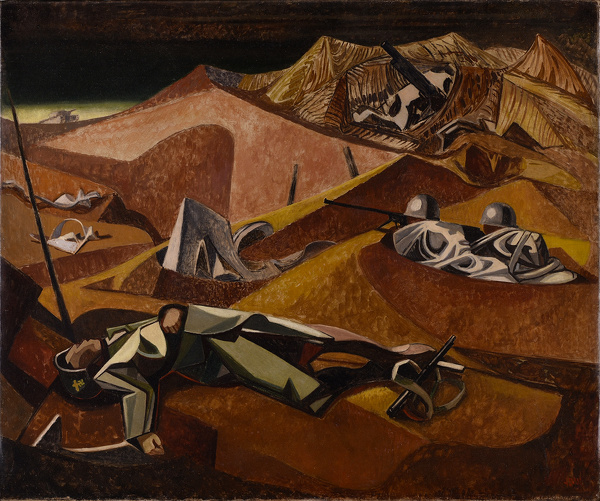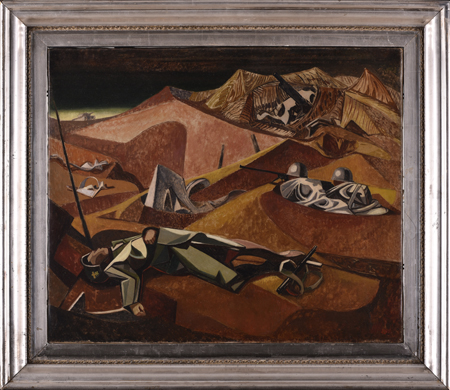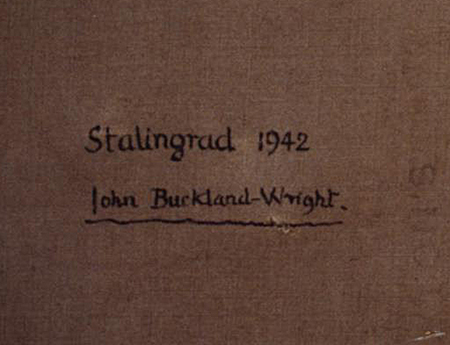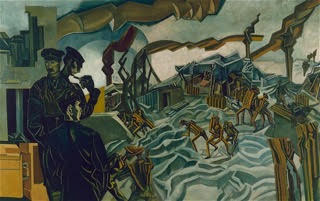Exhibited: Adelaide, National Gallery of South Australia, The London Group (one of 34 pictures selected as an overview of the London Group of British artists;
WW2 - War Pictures by British Artists, Morley College London, 28 October -23 November 2016, cat 128.
Literature: WW2 - War Pictures by British Artists, Edited by Sacha Llewellyn & Paul Liss, July 2016, cat 128, page 170-171.
The battle of Stalingrad (August 1942 - February 1943) was a turning point of the Second World War. The Germans incurred massive losses.
Buckland Wright had been living and working along side Hayter in Paris since the late 1920's, returning to England with his wife at the beginning of the war.
The Wehrmacht's gun positions are set within a nightmarish surrealist landscape. On the horizon, emerging from the darkness, looms a Russian T-34 tank.
Their 20,000 tanks hopelessly outnumbered those of their enemy.
Having joined the Scottish Ambulance Service, he was seconded to the French Army at Verdun, the sector in which the French suffered the greatest devastation during the First World War. There he witnessed harrowing scenes of human devastation while rescuing wounded and dying men from the front line trenches. Following the war, JBW found relief in drawing the female figure that incorporated the romantic ideal of Greek philosophy into the very essence of the emotional expssion of his work. Through his art he was able to come to terms with the horrors he had experienced during the war and to restore unity and tranquillity to the devastated landscapes
Although Buckland-Wright was influenced stylistically by Continental art - absorbing at first hand the developments of Cubism and Surrealism during the interwar years - this composition is close in spirit to Wyndham Lewis' A Battery Shelled, 1919, (IWM)




